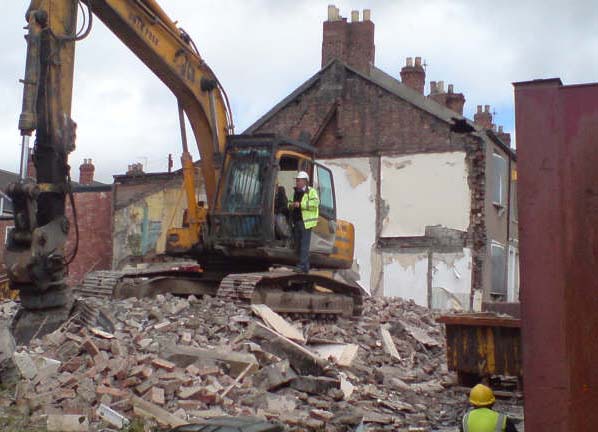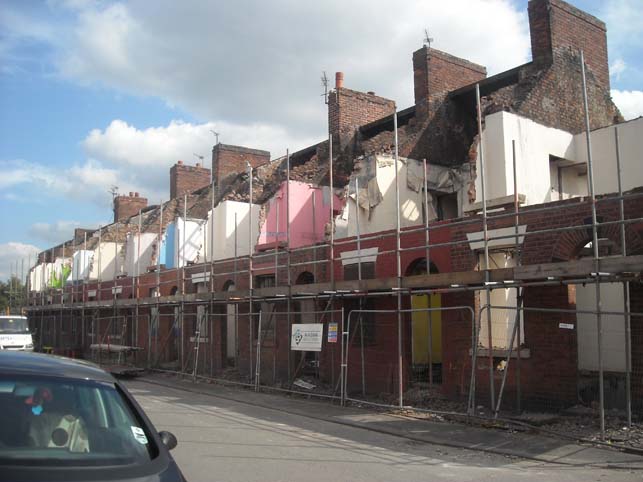SAVE Secures Landmark Ruling on Demolition
25 March 2011
SAVE Britain’s Heritage has secured a landmark judgment against the Secretary of State for Communities and Local Government which will introduce new controls over demolitions of buildings and structures under UK planning law.
The ruling was secured after a hearing in the Court of Appeal in London of a case between SAVE and the Secretary of State. The case involved the decision by Lancaster City Council to authorise the demolition, without prior approval, of the historic Mitchell's Brewery building, situated in the contested ‘Canal Corridor’ area of the city. Although the brewery has since been listed, the case has remained live, with SAVE’s legal team seeking a landmark ruling. The Appeal decision follows an initial defeat in the High Court last year.
The result of the judgment is to bring - for the first time - all demolitions into the scope of a European Directive (the Environmental Impact Assessment Directive) governing the environmental effects of building projects and other schemes and interventions in the environment. Previously, the Secretary of State had maintained that demolition in itself fell outside this Directive as it did not constitute a 'project'. Now, any proposed demolition which is considered to have significant effects on the environment will be subject to the Environmental Impact Assessment (EIA) process. The Court of Appeal ruled unlawful most of the Secretary of State’s 'Demolition Direction' which exempts demolition from planning control.
The ruling will have widespread implications for planning authorities, and will have a particular and immediate impact on proposed demolitions of large areas of terraced housing under the soon-to-be-defunct Housing Market Renewal (Pathfinder) Initiative. SAVE is currently involved in a number of Pathfinder battles, including a campaign to save the 'Welsh Streets' area of Toxteth, Liverpool, (including Ringo Starr's birthplace) from the bulldozers. Despite the recent intervention by the Housing Minister, calling for Liverpool council to explore alternatives to demolition, the council has just submitted a new demolition notice. This latest ruling will require the council to subject the scheme for demolition to the rigours of the environmental impact assessment process.
The judgment will also mean that proposals for demolition of listed buildings and buildings in conservation areas may need Environmental Impact Assessment
William Palin, SAVE's Secretary says 'this is a crucial judgement which will have far reaching effects on the way that local councils deal with demolitions of all types of building. It confirms that the government's interpretation of this important European Directive has hitherto been too narrow and has wrongly excluded demolition from its scope. We have been arguing for years that it is absurd that a developer can escape the Directive by separating demolition from development when it is clear that demolition can and does have serious impacts on the environment. For this result we are of course indebted to our superb legal team - Susan Ring (Richard Buxton Solicitors), counsel Richard Harwood and barrister Andrew Deakin (both of Thirty Nine Essex Street Chambers). They showed great persistence, courage and determination and it is gratifying that they have at last been rewarded for their efforts.'
Marcus Binney, President of SAVE, says: ‘for 35 years SAVE has challenged the waste involved in the demolition, year on year, of tens of thousands of soundly built houses which could often be renovated for a fraction of the cost of compulsory purchase, demolition and rebuilding. The appeal court judgment is of vast significance as it will help to put a brake on the cruel practice of evicting residents and flattening houses before any decision has been made about the future of the site’.
NOTES TO EDITORS
For a technical account of the decision see Thirty Nine Essex Street
Legal Team
Susan Ring, Richard Buxton Environmental and Planning Law, 19B Victoria Street, Cambridge CB1 1JP Tel: 01223 328933
Website
Richard Harwood; Andrew Deakin, 39 Essex Street, London WC2R 3AT. Tel: 020 7832 1111
Website
Mechanics of the Decision
Prior to the ruling, demolition of building was dealt within this way in the planning system:
(i) The demolition of a listed building required listed building consent;
(ii) The demolition of a building in a conservation area, with minor exceptions, required conservation area consent;
(iii) The demolition of a scheduled monument required scheduled monument consent;
(iv) The demolition of houses and flats, or buildings adjoining houses and flats, benefitted from ‘permitted development rights’ but might be subject to a requirement of prior approval of the details of the demolition process and how the site would be left. In the Secretary of State’s view the principle of whether to demolish the buildings could not be considered;
(v) The demolition of other buildings, including commercial buildings, required no planning consent at all.
Consequently it was not possible to prevent the demolition of unlisted buildings outside conservation areas.
The effect of the judgment is that all demolition, apart possibly from very minor acts, requires planning permission whether as permitted development or on application to the local authority. If the demolition is likely to have significant effects on the environment then an Environmental Impact Assessment has to be carried out to consider all the effects of the project and permission to demolish can be refused.
In technical terms the Town and Country Planning (Demolition – Description of Buildings) Direction 1995 paragraph 2(1) provided that the demolition of the following buildings was not development and so did not need planning permission:
(a) any building which is a listed building;
(b) any building in a conservation area;
(c) any building which is a scheduled monument;
(d) any building other than a dwelling house or a building adjoining a dwelling house;
(e) any building the cubic content of which, measures externally, does not exceed 50 cubic metres;
(f) the whole or any part of any gate, fence, wall or other means of enclosure”
The Court of Appeal have declared that subparagraphs (a) to (d) are unlawful and so the first four categories of demolition require planning permission. The Court did not consider whether the exclusions in subparagraphs (e) and (f) are lawful. Planning permission for demolition is usually granted as a permitted development right by Part 31, Schedule 2 of the Town and Country Planning (General Permitted Development) Order 1995. A person proposing to carry out demolition under that Part has to apply to the council to see if prior approval of the method of demolition and any proposed restoration of the demolition site is required. A further consequence of the Court of Appeal’s judgment is that where proposed demolitions are likely to have significant effects on the environment these permitted development rights are withdrawn. A developer will therefore have to apply for planning permission with an environmental statement identifying the impacts of the proposal. Permission to demolish could then be refused.




